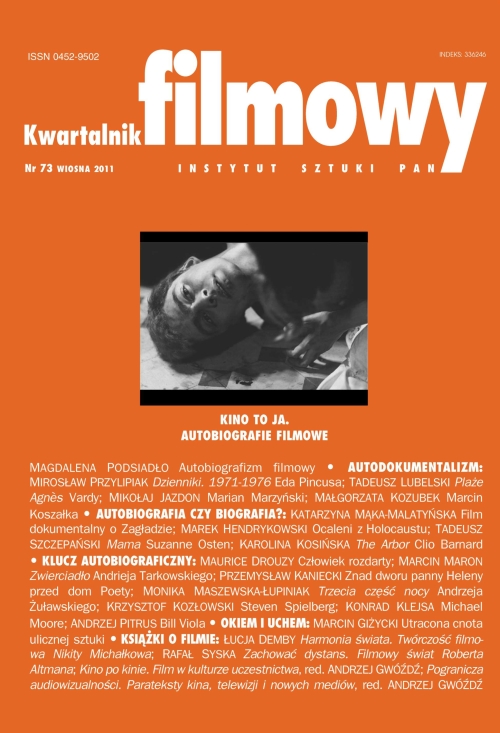Puste miejsce. Strategie autobiograficzne w filmie dokumentalnym o Zagładzie
Empty space. Autobiographical strategies in documentary films on Holocaust
Author(s): Katarzyna Mąka-MalatyńskaSubject(s): Theatre, Dance, Performing Arts
Published by: Instytut Sztuki Polskiej Akademii Nauk
Keywords: Holocaust; documentary; autobiographism
Summary/Abstract: Autobiographism relies on a kind of agreement with a viewer, listener or reader on basis of which culture text is deciphered as a record of an author’s experience. It can be understood only when an artist’s biography is known and functions in society. As Mąka-Malatyńska argues, autobiographical convention is rarely used in documentary films on Holocaust, which appears to be a consequence of psychological resistance to describing own experiences and overwhelming power of images in which the past is brought back to life. In the strict sense only a few films represent this trend in documentary cinema. An autobiography, an experience of a Holocaust is a theme in films by Mira Hamermesh and Marian Marzyński. In broader sense documentaries co-created by Survivors in which they are protagonists and narrators and where their stories determine film construction can be treated a autobiographical, e.g. "Miejsce urodzenia" ("Birthplace") by Paweł Łoziński (1992). More frequently autobiographical motifs are used in fiction films, although in such case they are not autobiographical in a narrow sense. Filmmakers, like Roman Polański in "Pianist" (2002), hide behind someone else’s story telling about their own experiences and emotions at the same time.
Journal: Kwartalnik Filmowy
- Issue Year: 2011
- Issue No: 73
- Page Range: 64-79
- Page Count: 15
- Language: Polish

